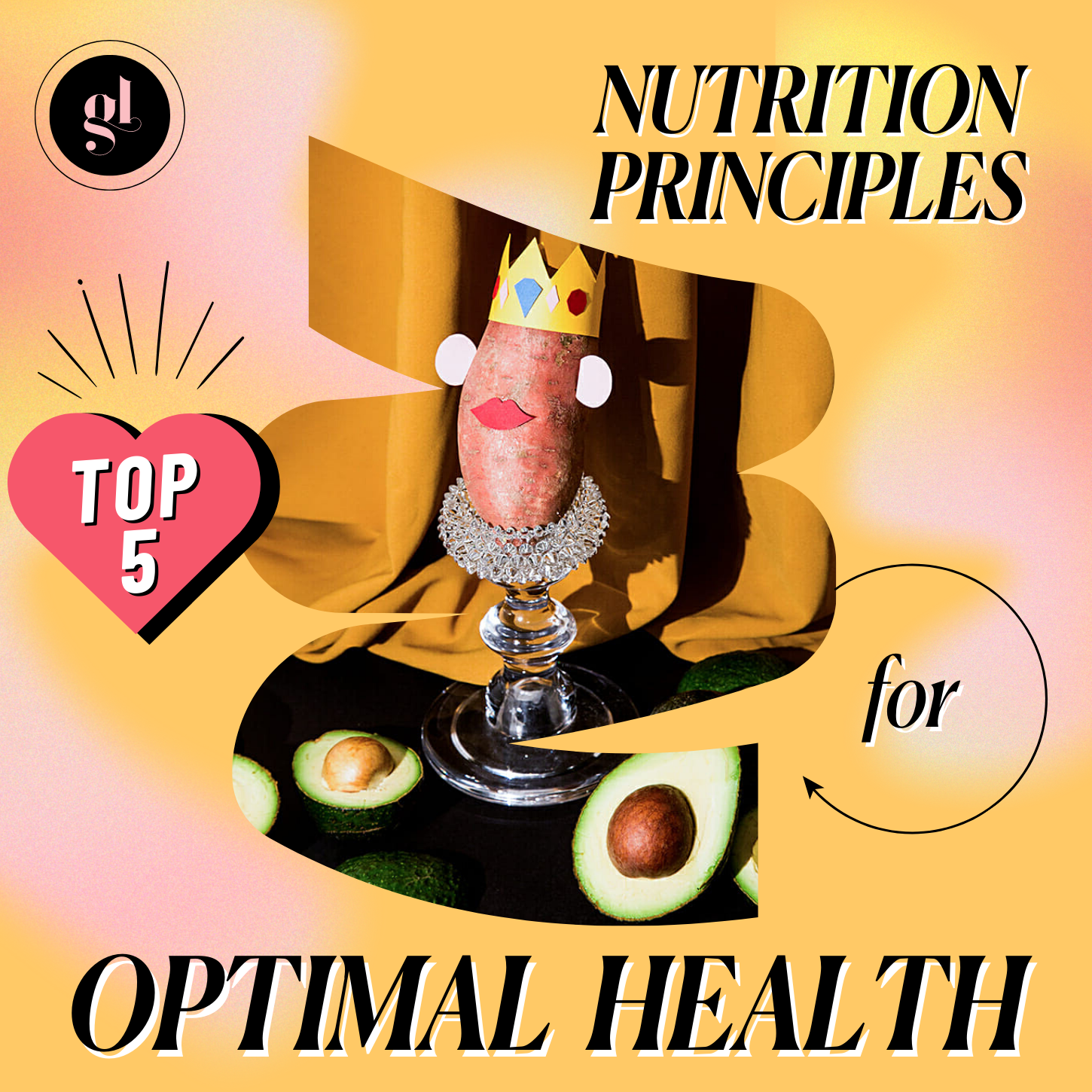The vagus nerve is a long, wandering nerve that is a critical part of our parasympathetic nervous system. It is the longest nerve in our body and is the direct line of communication between our brain and our gut. It supplies our organs and brain with vital information and controls things like our heart rate, digestive tract, lung function, blood pressure, just to name a few.
But it doesn’t stop there.
The vagus nerve also affects our mental health, and studies have shown that, when stimulated, it can help to improve our mood and reduce stress.
In this video I share eight easy and suprising ways you can stimulate your vagus nerve to improve your health!
Transcript: 8 Surprising Ways You Can Stimulate Your Vagus Nerve
Have you ever been so nervous for a job interview that your stomach feels like it’s tied up in a knot? Or perhaps, you recall feeling those butterflies in your gut before that first date?
Turns out that your gut and your brain have more to do with each other than what you first think.
This connection between your gastrointestinal tract and your brain is called the gut-brain axis. The gut-brain axis is a two-way communication pathway between the central nervous system, that is your brain, and the gastrointestinal tract. This two-way highway uses traffic lights or signalling hormones, and all sorts of other fancy messengers to manage what you do and how you feel on a day-to-day basis.
A key player in this gut-brain axis is the vagus nerve, and this is what everyone is talking about.
The vagus nerve is a direct line of communication between your brain and your gut. It plays a key role in everything from your emotions to your quality of sleep.
The vagus nerve is the longest and most complex cranial nerve in the body. Its name, derived from Latin, means “wandering,” and rightly so as it wanders from the brain stem down to the trachea, larynx, heart, lungs, liver, kidneys, spleen, pancreas and intestines.
The vagus nerve has two major functions:
-
First, it transmits messages to each of your major organs, checking to see that they’re functioning properly. It’s like your sweet grandma who rings up her grandchildren just to make sure you’re all happy and doing well.
-
Second, it activates and controls your parasympathetic nervous system. So your autonomic nervous system has two main branches- your sympathetic nervous system and your parasympathetic nervous system. Your sympathetic nervous system is your fight or flight response, where your adrenal glands are activated during times of stress, pumping out cortisol and adrenaline, and readying your body for some action. Your parasympathetic nervous system on the other hand, is your “rest and digest” mode. This is where your body is relaxed and those stress hormones aren’t racing around your body. That’s an oversimplification but you get the idea. Fight or flight, rest and digest, and your vagus nerve is largely responsible for this rest and digest response.
On top of that, your vagus nerve also helps to regulate inflammation, help you sleep better, and improve digestion of your food, to name a few.
So here’s the deal with the vagus nerve.
If you have what we call low vagal tone, it means it will impact your ability to respond to stress. Since your vagus nerve activates the parasympathetic nervous system, having higher vagal tone means that your body can relax faster after stress.
In fact, physicians as far back as the Roman empire have been grappling with how the vagus nerve impacts body function. In recent years, the vagus nerve has taken centre stage as a potential medical treatment for treating a variety of psychiatric, gastrointestinal and inflammatory disorders.
In fact, there are now electrical devices that are either surgically implanted or work via an indirect transcutaneous non-invasive stimulation, that can send shocks to the vagus nerve to improve vagus action.
But there is more good news.
We’ve now learned that we have the ability to befriend this wandering nerve. Research has shown us that there are some simple things you can do at home to manually stimulate your vagus nerve and increase your vagal tone.
What can this do for you? It can:
- Help you respond better to stress
- Reduce your heart rate and blood pressure
- Alleviate depression and anxiety and improve your overall moods
- Reduce inflammation
In other words, increasing your vagal tone is a game-changer.
So let me take you through the top 8 things you can do to stimulate your vagus nerve.
1. The easiest way to stimulate the vagus nerve is through slow, deep, diaphragmatic breathing.
The diaphragm and the intercostal muscles between the ribs are what controls the movement of breathing. When a person is under stress, their breathing becomes shallow and they use their shoulders to move air in and out of the lungs instead of the diaphragm. This pattern of breathing prolongs the feelings of stress. Deep breathing that uses the whole diaphragm activates the parasympathetic nervous system via stimulation of the vagus nerve.
2. Meditation
Meditation is one of my favorite relaxation techniques and it also stimulates the vagus nerve. Studies have found that meditation reduces that sympathetic fight or flight response and increases vagal tone, helping you to be able to respond better to the stresses in your life.
3. Singing or humming
Singing, humming or chanting activates the parasympathetic nervous system and the vagus nerve by actuating the muscles in the throat, neck and lungs. The vagus nerve passes through by the vocal cords and the inner ear and the vibrations that singing and humming produce are a simple way to activate the vagus nerve.
4. Massage
Do I really need to convince you to go get a massage?
Massaging areas of the body which are stimulated by the vagus nerve alters vagal tone and provides a relaxation response. This includes applying pressure to muscles of the face, side and front of neck and head as well as the ribcage and abdomen.
5. Cold exposure
Immersion in cold water or even putting your face in cold water is an effective means to increase parasympathetic activity. Cold stimulation triggers peripheral vasoconstriction, making your core work harder to keep warmer by shifting the blood volume toward the centre. This resulting increase in central pressure in turn activates the baroreflex which is responsible for shifting your body from a sympathetic state to a parasympathetic state. This is why ice-swimming is a well-known treatment for depression in countries like Finland and Sweden during the long, dark months of winter.
6. Yoga and exercise
That’s right, another reason to get moving!
Exercise, especially activities that get your heart rate up, is a great way to tone your vagus nerve.
Gentle exercise such as yoga is also effective. In fact, studies have shown yoga is an effective treatment for post-traumatic stress disorder as it increases parasympathetic activity, decreases amygdala overactivity (which is the part of the brain involved in the processing of emotions and memories associated with fear), and increases GABA (your calming neurotransmitter).
7. Positive social interactions
Studies have shown that positive social interactions stimulate the parasympathetic response and engage your vagus nerve. This in turn improves vagal tone and counteracts stress responses associated with “fight or flight” mechanisms. So get on your phone now and organise a catch-up with your friends.
8. Probiotics
Research into the gut-brain axis has found that the vagus nerve is highly influenced by bacteria, fungus and other microbes in your gut microbiome. There is some evidence to suggest particular probiotic strains may influence vagal nerve tone. For example, some probiotics, such as Bifidobacterium signal to the brain via vagal pathways. Clinical studies where animals were supplemented with Lactobacillus. rhamnosus showed alterations in GABA receptors that were mediated by the vagus nerve.
And that’s the top 8 things you can do at home to increase your vagal tone and start feeling better. So please, comment below- I would love to hear what you are going to do to enhance your vagal tone. And don’t forget to like and subscribe. This information about the vagus nerve is a game-changer, and we want to share it with as many people as we can.
Now one last thing before you go, if you want to find out more about this gut-brain axis, check out this video here where you can learn more secrets about how you can manipulate your diet to improve your mental health.














What Do You Think? Comment Below: